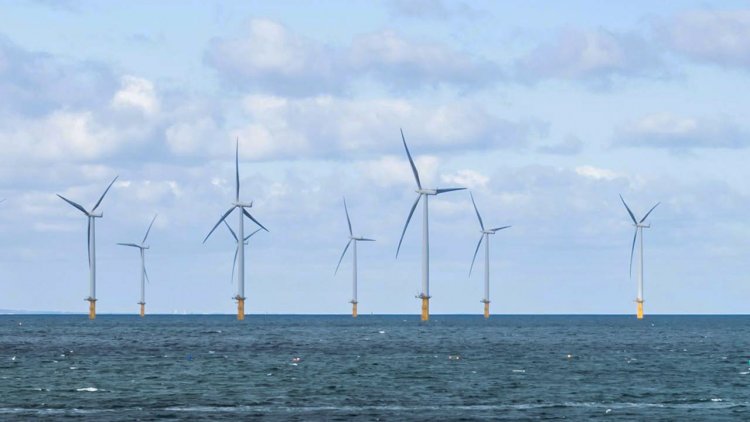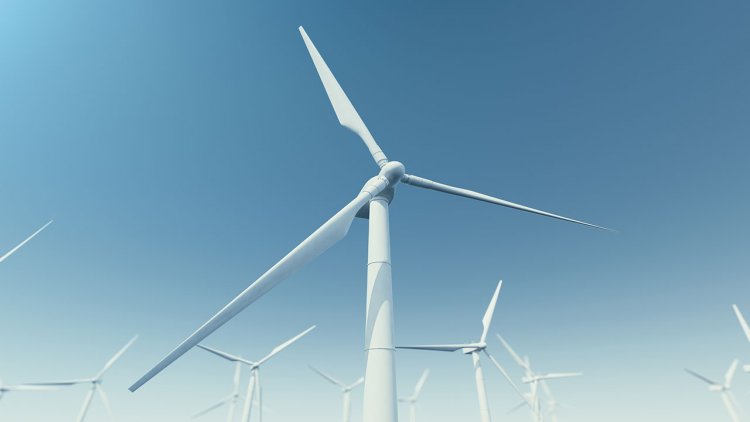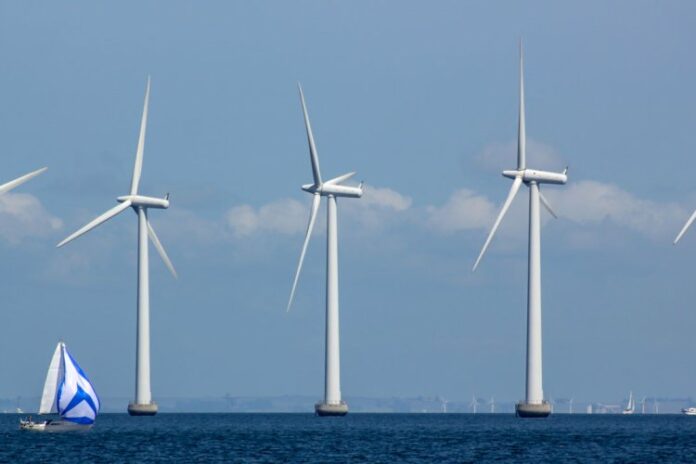A new project to reduce the commercial uncertainty around the modelling of the Global Blockage Effect (GBE) was announced. The Global Blockage Effect in Offshore Wind (OWA GloBE) project is the latest joint industry initiative to be delivered under the Offshore Wind Accelerator and is designed to improve understanding of the true impact of the GBE by undertaking a first of a kind measurement campaign under real offshore conditions.
GBE is a phenomenon that occurs as a complex interaction between the wind farm and the atmosphere as the wind flows through, over and around large offshore wind farms. The effect is subtle, difficult to measure and hard to extract from legacy campaign data, therefore assumptions incorporated into performance calculations are impacted by existing magnitude and model uncertainties.
A number of competing classes of models and approaches to the evaluation have emerged. While there is a broad industry consensus that the GBE causes decelerations in front of offshore wind farms which reduce the energy yield, different opinions exist on how to consider its downstream impacts and how to account for redistribution of energy, for example. This is commercially relevant as uncertainty in wind turbine and wind farm performance drives a high cost of capital for offshore sites. Any over estimation of the GBE leads to the de-valuation of offshore wind projects. Consequently, efforts to increase understanding of the GBE are a key focus for the offshore wind industry.

The OWA GloBE project is led by RWE with support from the Carbon Trust as part of the Offshore Wind Accelerator programme. The project consortium currently consists of six additional wind farm developers: EDF Renewables, EnBW, Equinor, ScottishPower Renewables, Shell and Vattenfall, along with research and industry partners DTU Wind Energy and Leosphere. The project budget, including in-kind contributions, is €3.9m. Over the course of the project, leading consultancies and expert organisations dealing with GBE modelling will also be engaged to help build a broad industry consensus around the treatment of the GBE.
The OWA GloBE project centres around the planning, realisation and evaluation of a measurement campaign to be conducted in the second half of 2021, which is designed to assess the multiple aspects of the GBE at full scale and observe the atmospheric phenomena that drive it. The aim is to produce a comprehensive dataset that can be used as the industry benchmark for assessing and quantifying the impact of the GBE on energy production.
The campaign is designed to consider and agnostically test multiple existing hypotheses on how to reflect the GBE in models and in wind energy assessments. In addition, it will test the emerging hypothesis that calculations done with rapid fully coupled methods might represent physics fundamentals associated with the GBE better than current tools. Since the rapid coupled approach combines wake and blockage models, GBE on annual energy production would be combined into an overall turbine interaction effect – removing the need to apply any further blockage treatment. Pre-investigations suggest the impact of the GBE could be less than currently assumed by the industry.

The campaign will be conducted at the Heligoland windfarm cluster in the German Bight, at the Nordsee Ost and Amrumbank West wind farms which are both wholly-owned by RWE. The two wind farms are separated by a strip of empty seascape approximately 4km wide, known as the ‘Kaskasi gap’, in which RWE will construct the Kaskasi wind farm, anticipated to go online in 2022. This provides an opportunity to create a unique experimental setup for GBE using multiple remote sensing techniques, including dual doppler scanning light detection and ranging (LiDAR) measurements in combination with turbine production data. In addition, the combination of Nordsee Ost, Amrumbank West and the ‘Kaskasi gap’ is expected to concentrate the flow features that the project aims to observe.
Richard Sandford, Director Offshore Wind Development Europe at RWE Renewables, commented:
“The offshore wind industry will benefit immensely from the data collected in this project as it will help us gain a better understanding of Global Blockage Effect. By appraising and testing various industry hypotheses under live conditions, we will be able to close existing knowledge gaps and reach an industry-wide consensus on the effect. OWA GloBE can increase certainty in offshore wind energy yield estimates and thereby help lower the Levelized Cost of Energy.”
Jan Matthiesen, Director Offshore Wind at the Carbon Trust, commented:
“The OWA GloBE project fits well into Carbon Trust’s portfolio of joint industry activities. It has been designed with the aim of collecting an unprecedented and highly accurate dataset, which will then be analysed by world-leading research partners. The chosen test site in the ‘Kaskasi gap’ offers a unique opportunity to measure the Global Blockage Effect as it puts a magnifying glass on the phenomenon. We are confident that the project’s findings will promote industry wide consensus on global blockage at windfarm level. OWA GloBE is another good example of the benefits that can be created by collaborative R&D.”



